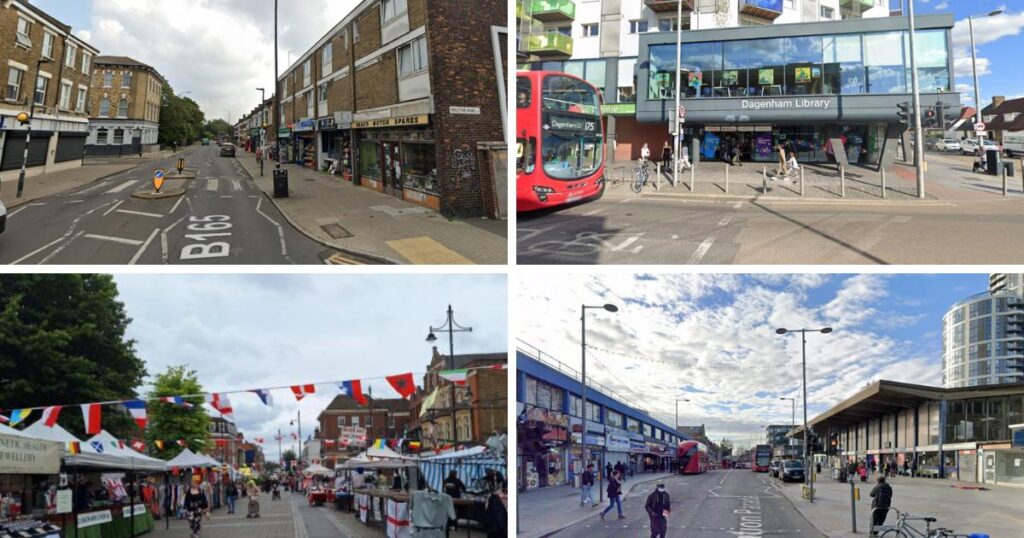The London Government Act in 1963 saw the creation of 32 London boroughs as well as the City of London.
This meant that surrounding areas, such as Essex, had parts taken away and classified as London under boroughs such as Havering and Barking and Dagenham.
The towns within these boroughs ceased to be part of Essex, and all their residents became Londoners.
However, many people in these towns would argue that they still feel more part of Essex than London.
Romford
Romford Market (Image: Google) Romford was once its own borough but is now the biggest town in the London Borough of Havering although many locals prefer to cling on to its Essex heritage.
The debate here is as lively as anywhere in east London with young people even taking to social media to conduct polls and gather opinions.
Romford has been a substantial market town since 1247 and according to data firm plumplot, had a population of around 591,000 people as of 2022.
Hornchurch

Hornchurch merged with the borough of Romford in 1965 and the first council publication, called the Havering Review, included items about “the great takeover”, as well as information on the library services and Queen’s Theatre in Hornchurch.
Tim Lambert of Local Histories described the town as “a thriving suburb of London” in an article on the town’s history.
Barking

Today Barking is known for its diverse range of shops and restaurants, including the Vicarage Field Shopping Centre.
The town is served by transport links such as Barking train station which opened in 1854 and has been part of the London Underground since 1908.
Dagenham

The area was mostly undeveloped until the London County Council began construction of the Becontree housing estate in 1921.
Dagenham was chosen as a location for industrial activity and is perhaps most famous for being the location of the Ford Dagenham motor car plant where new neighbourhood Beam Park is being developed.
In February, London’s newest film studios, Eastbrook Studios opened in Yew Tree Avenue.
West Ham

The parish encountered rapid growth in the 1840s to become a large Victorian manufacturing town.
By 1901, it was the ninth most-populous district in the country.
West Ham now belongs to the London Borough of Newham.




